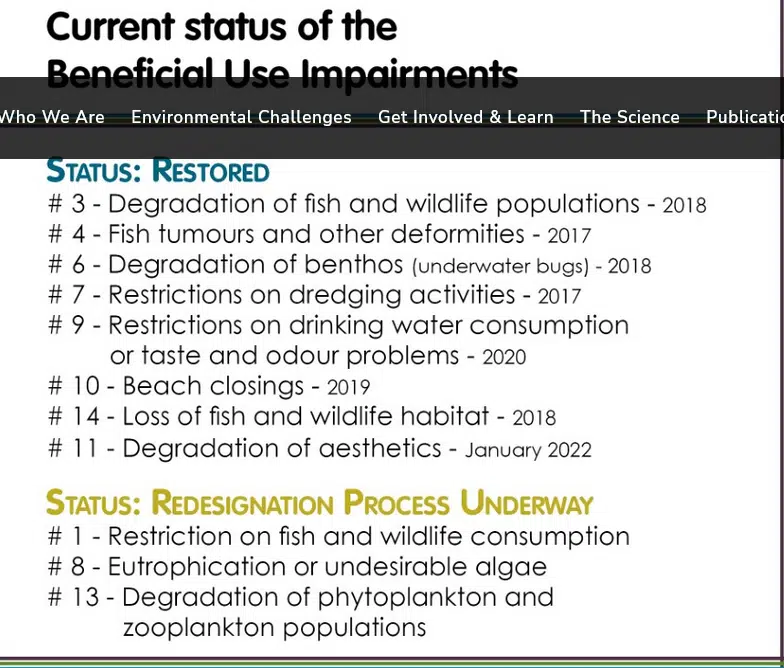In the Bay of Quinte there were four environmental issues identified – excess nutrients, bacterial contamination, toxins, and loss of fish and wildlife habitat. These issues were placed into categories called BUIs (Beneficial Use Impairments), so they could be monitored and assessed. Each BUI describes a human or ecological use of the ecosystem that has been lost or impaired as the result of environmental degradation. Some examples are loss of fish and wildlife habitat, degradation of aesthetic, restrictions on drinking water or taste and odor problems.
There were 14 BUIs identified for Great Lakes Areas of Concern by the IJC. Eleven BUIs were attributed to the Bay of Quinte.
Is the Bay’s ecosystem going back to pre-colonization days? No. Human influences have permanently altered the natural environment.
Restoring the BUIs does not mean that the AOC has returned to a pristine historic condition; but rather, that the problems identified in the 1990 RAP Stage 1 Report impacting the Bay of Quinte have been restored to meet the scientific criteria established for each BUI. The criteria are measurable environmental conditions that need to be achieved before the BUI can be considered restored.
Currently, the Bay of Quinte has eight restored BUIs, and the final three are either having the final reports completed or a final analysis of the scientific data.

THE ABOVE PROVIDED BY THE BAY OF QUINTE REMEDIAL ACTION PLAN






